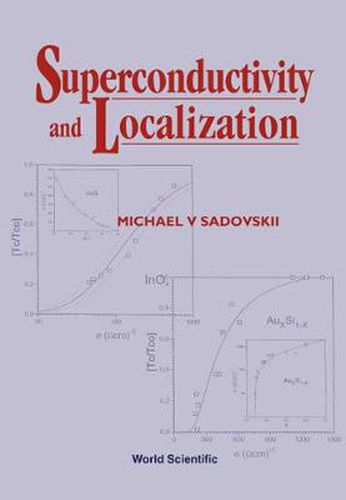Readings Newsletter
Become a Readings Member to make your shopping experience even easier.
Sign in or sign up for free!
You’re not far away from qualifying for FREE standard shipping within Australia
You’ve qualified for FREE standard shipping within Australia
The cart is loading…






This book presents a review of theoretical and experimental work on the problem of the interplay of Anderson localization and superconductivity in strongly disordered systems. Superconductivity persists close to disorder-induced metal-insulator transition in a number of real systems, e.g. amorphous metals and compounds, systems disordered by fast neutron irradiation, systems with impurities, etc. High temperature superconductors are especially interesting from this point of view, as the experiments with controllable disordering may provide important clues to the nature of electronic states in these systems.The book starts with a brief discussion on modern aspects of localization theory, including the basic concept of scaling, self-consistent theory of localization and interaction effects. After that it analyzes disorder effects on Cooper pairing and superconductivity transition temperature as well as Ginzburg-Landau equations for superconductors that are close to the Anderson transition. A necessary generalization of the usual theory of dirty superconductors is formulated which allows one to analyze anomalies of the main superconducting properties close to disorder-induced metal-insulator transition. Finally, the book reviews a number of experiments demonstrating superconductivity close to the Anderson transition, in both traditional and high Tc superconductors.
$9.00 standard shipping within Australia
FREE standard shipping within Australia for orders over $100.00
Express & International shipping calculated at checkout
This book presents a review of theoretical and experimental work on the problem of the interplay of Anderson localization and superconductivity in strongly disordered systems. Superconductivity persists close to disorder-induced metal-insulator transition in a number of real systems, e.g. amorphous metals and compounds, systems disordered by fast neutron irradiation, systems with impurities, etc. High temperature superconductors are especially interesting from this point of view, as the experiments with controllable disordering may provide important clues to the nature of electronic states in these systems.The book starts with a brief discussion on modern aspects of localization theory, including the basic concept of scaling, self-consistent theory of localization and interaction effects. After that it analyzes disorder effects on Cooper pairing and superconductivity transition temperature as well as Ginzburg-Landau equations for superconductors that are close to the Anderson transition. A necessary generalization of the usual theory of dirty superconductors is formulated which allows one to analyze anomalies of the main superconducting properties close to disorder-induced metal-insulator transition. Finally, the book reviews a number of experiments demonstrating superconductivity close to the Anderson transition, in both traditional and high Tc superconductors.